Which is better for Camper Van Insulation: 3M Thinsulate or Havelock Wool?
Ah, the great debate! Is 3M Thinsulate or Havelock Wool better for camper van insulation? After working with, and installing, both of these materials over the course of our many DIY van builds, we are ready to compare them across various important points for you.
In this guide we will discuss:
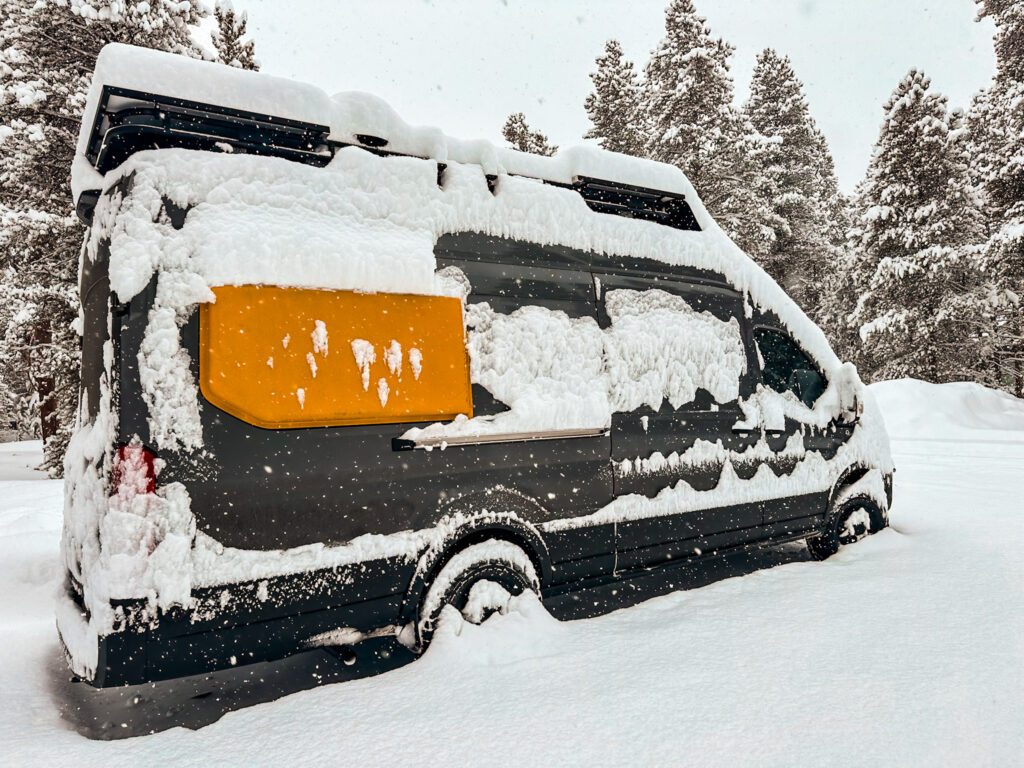
** Disclaimer: This blog post contains various affiliate links that provide a small kickback to us, at no additional cost to you. We truly appreciate your support if you choose to purchase through these! **
Basics of Camper Van Insulation
The proper camper van insulation strategy does two things:
- Keeps your camper van interior cool in the hot months
- And, keeps your camper van interior warm in the cold months
What is Havelock Wool (Sheep Wool)?
Havelock Wool is sheep wool, a fantastic thermal insulator known for hundreds of years. It has extremely high thermal conductivity that does not degrade over time, even with the added job of moisture management as it absorbs and releases water. In addition to its insulating qualities, sheep wool has sound dampening qualities, filters air, and does not allow for the growth of mold and mildew.
Havelock Wool is the leading seller of sheep wool for camper van insulation. You may also find other brands depending on where you live, and if you do, share them in the comments section!
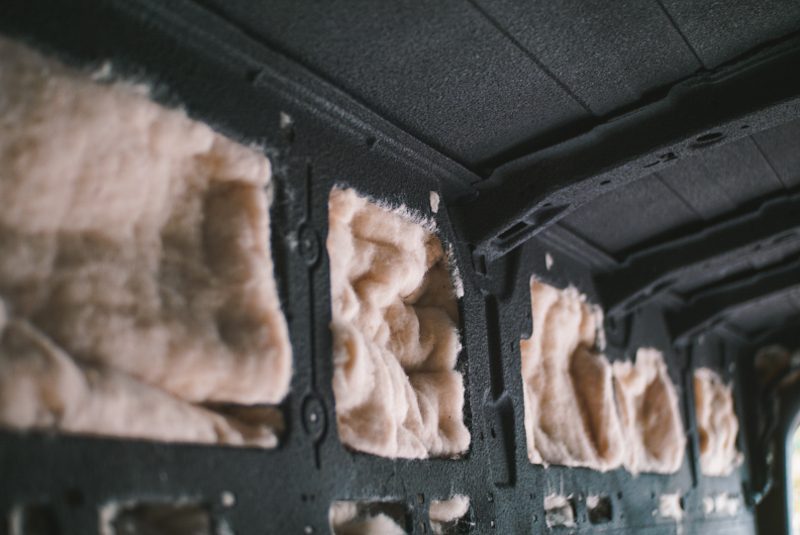

What is 3M Thinsulate?
3M Thinsulate was developed as acoustic insulation for vehicles as the demand for quieter “in cab” experiences has greatly increased over the years. However, it turns out that this lightweight and acoustic dampening material is also a fantastic thermal insulator. 3M Thinsulate is a man-made blend of polyester and polypropylene that is extremely easy to work with, is flame resistant and, does not off gas.
NOTE: Throughout this guide, we are specifically speaking about 3M Thinsulate SM600L when we reference “3M Thinsulate”.
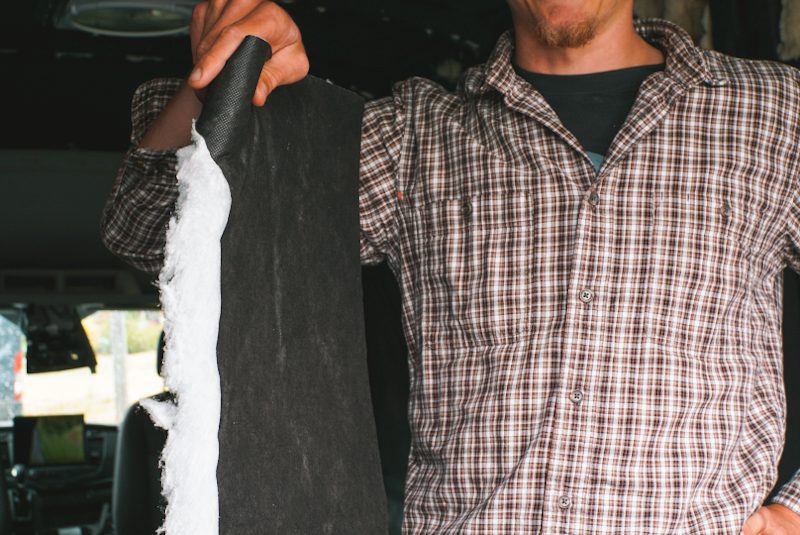

Are there other insulation alternatives?
There are absolutely other insuation materials on the market; however, we urge you to think about the unique needs that camper vans require in terms of insulation:
- You want to avoid chemicals that may off gas as you are living very closely to your walls.
- You need to be able to insulate tiny cracks, gaps, and pillars completely. Not all materials can stuff into small spaces easily.
- You want to be careful with spray foam (hire a professional!) as irreversible damage can be done to the body of your camper van if done incorrectly.
We chose to compare 3M Thinsulate and Havelock Wool as they are the two most common options we have seen over the 3 years that we have been on the road. If you are curious about alternatives, head on over to our Complete Camper Van Insulation Guide to learn about others.
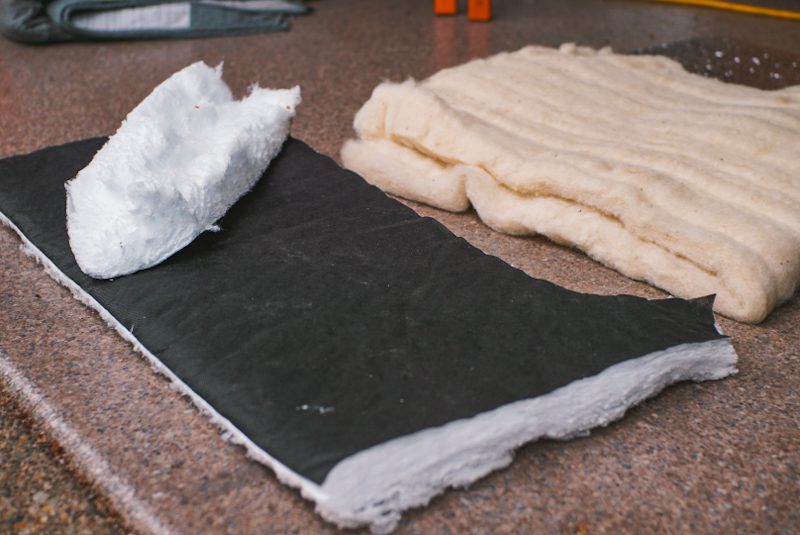

3M Thinsulate vs. Havelock Wool
The great debate begins!
Thermal Performance
Thermal performance is best measured in R-Value which is a measurement indiciating a materials capacity to hold heat. The higher the R-Value, the better the insulator.
Havelock Wool has an R-Value of 3.6 per inch. Each batt comes in 2 inch thick sheets, making the R-Value per layer 7.2.
3M Thinsulate SM600L data widely varies across sources for “per inch” statistics. However, it is widely accepted that a single layer of 3M Thinsulate SM600L, which is 1 3/4″ has an R-Value of 5.
Installation Complexity
To install 3M Thinsulate, you need to cut pieces to the correct size, and apply with 3M90 spray adhesive. Be sure to spray both the material, and at the wall.
To install Havelock Wool, you have two methods. First, you can tear off pieces and shove them into the pillars, gaps, cracks, and other nooks and crannies. Second, you can cut batts into the right size for cavities and temporarily hold them in place with tape, or string. When your final walls, or ceiling is up, that will hold it in place fully.
Generally, we find Havelock Wool best for installing into the gaps, cracks, and pillars, while 3M Thinsulate is better for walls and ceilings as it is held up great by adhesive. Who says that you have to choose just one?!


Bonus: 3M Thinsulate Kits
If cost is not a factor in your decision making, you could opt for 3M Thinsulate Kits from Campervan HQ. These are offered for the three major chassis (Ram ProMaster, Mercedes Sprinter, and Ford Transit) and include pre-cut pieces for every single space you need to insulate. A diagram is supplied to help you place the pieces in the right spaces.
- Ford Transit High Roof (EXT or 148) – Prices starting at $655
- Mercedes Sprinter (144 & 170 & EXT) – Prices starting at $632
- Ram ProMaster (136 & 159) – Prices starting at $512
Cost
Below we have general estimates of how much insulation material you will need for various camper vans. From there, we have priced out the cost of each material for the 3 most common chassis:
- Ram ProMaster 159
- 3M Thinsulate: ~ $500
- Havelock Wool: ~ $600
- Mercedes Sprinter 170
- 3M Thinsulate: ~ $500
- Havelock Wool: ~ $600
- Ford Transit 148
- 3M Thinsulate: ~ $400
- Havelock Wool: ~ $450
These numbers are all based off of estimates, and you should still take your own measurements.
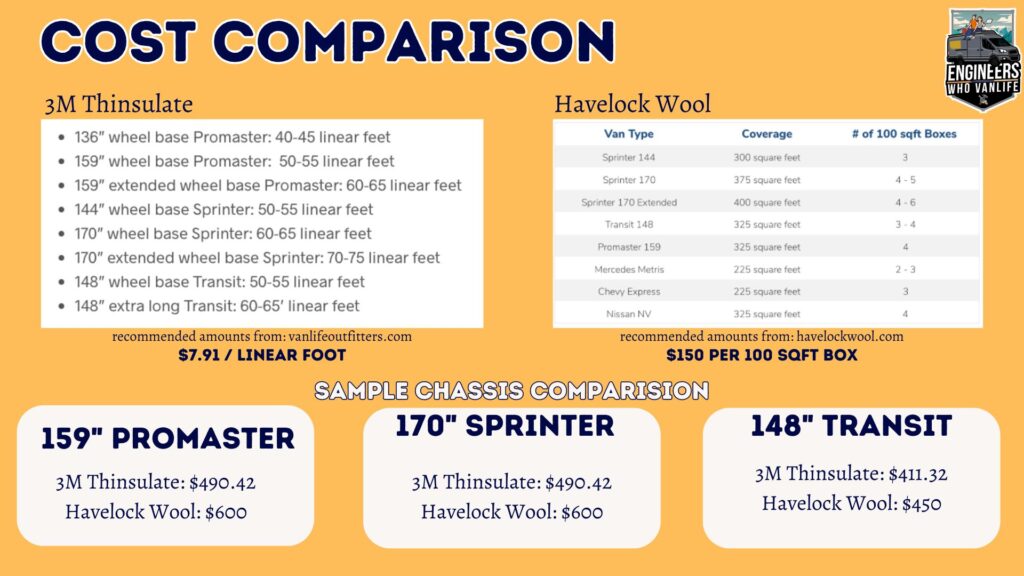

Moisture Management
Moisture management is crucial in camper vans to prevent mold and mildew buildup. The best way to mitigate moisture is to have constant airflow and to do this we recommend installing 2 MaxxAir fans.
Additionally, the insulation type that you choose can either help, or hinder, your moisture control. Both 3M Thinsulate and Havelock Wool have their own ways of mitigating moisture based on your preference. Seriously, there are many great debates over this point. Though, we must remind you that the most effective way to deal with moisture in a camper van is simply constant a i r f l o w.
- Havelock Wool is hygroscopic meaning that it absorbs and releases moisture depending on the relative humidity. Havelock Wool does NOT lose effectiveness when wet and as it is a keratin, mold growth is not supported.
- 3M Thinsulate is completely hydrophobic meaning that it will never absorb any water. If moisture gets into your walls, you will want to make sure there is a way out for it so the water does not repel and land in the bottom of all your cavities.
What do Van Lifers Have to Say About Insulation Choice?
If you are reaching the end of this thinking “is one really better than the other in all ways?” The answer is no. And, you can see just that in the poll we did of our Instagram followers below.
You truly cannot go wrong with either Havelock Wool, or 3M Thinsulate. In fact, in our camper van builds we use a combination of BOTH because we find them each effective for different applications.
Our tried and true insulation strategy is the following:
- Havelock Wool in all nooks, crannies, and pillars as it stuffs and expands extremely well.
- 3M Thinsulate on all walls and ceilings where adhesive is needed as it is the easier insulation to hold up with spray adhesive.


Thanks for being here! Happy building!
Eric + Colby
✉️ Join our mailing list for more content!
🙏🏽 If you are looking for more 1:1 van build help, we are here to help via Consulting or Travel Van Building.
[Start Here] Beginner Guides:










Comments 4
What about sprayfoam it covers everything and expands plus a better Revalue just asking because I’m north of Montreal Canada
Author
Spray foam is an excellent insulator. We just always recommend that you have it professionally done (or you have great confidence in doing it yourself!). If done wrong, the sheet metal of the van can be affected in the wrong places! I believe too that if you ever need body work done, it can be very hard, or impossible, if spray foam was used.
After insulating with entirely 3m thinsulate, I HIGHLY recommend using havlock wool and NOT thinsulate when insulating the bulkhead! This is because, in cold months, condensation just builds up there at night and in the morning, condensed water will literally POUR down from the roof center console! Havelock wool would likely do a better job of not repelling the water so it pools.
Author
Super interesting! We have only ever insulated the bulkhead with Havelock so can confirm this does not happen when you go that route. Thank you for sharing!!